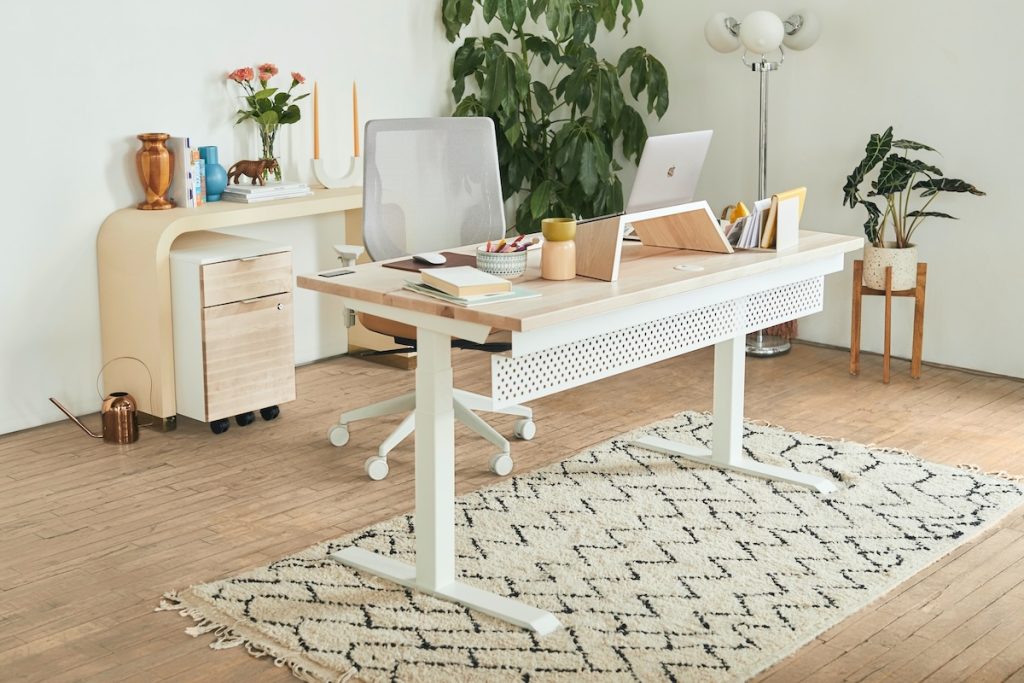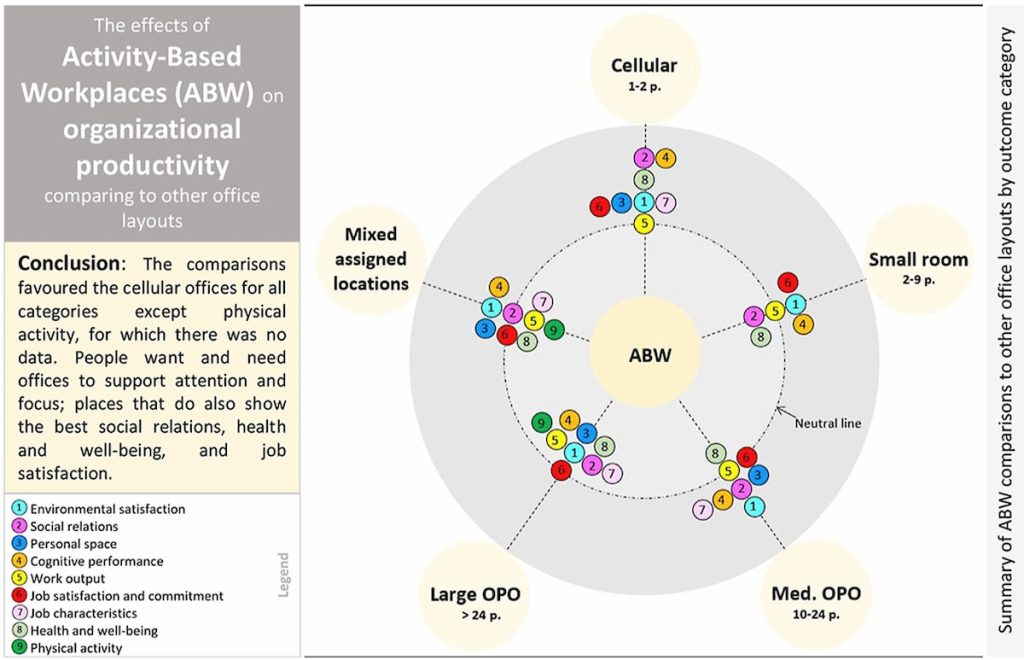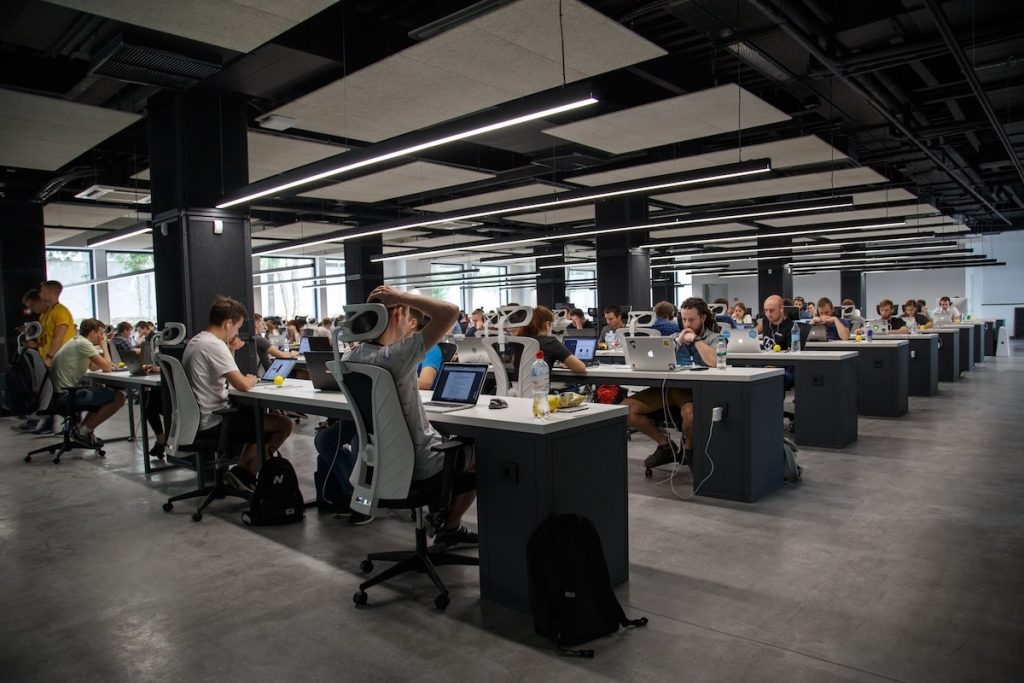
Today, many organizations are still adapting to the changes brought about by the recent pandemic. With the majority of people preferring to work remotely at least some of the time, companies are trying to come up with a workplace strategy fit for the future.
And many of the models of the recent past seem to be broken now. Such disruption may be a good opportunity to put aside preconceptions and take a fresh look at the facts about what really works in the workplace.
Of course, this will be very specific to each organization. But a general overview, such as the following review by Masoudinejad and Veitch, can help us get a better idea of where to start if we want to base the design of our workplaces on knowledge of their impact on people and businesses. And it seems that high privacy, one or two user rooms, may be making a comeback.
The authors of the literature review we are about to talk about looked at studies published between 2000 and 2020. They were interested in papers that described organizations moving from a more uniform type of space (whether cellular offices, small rooms, or open plan) to an activity-based working (ABW) model.
These studies measured the performance of the spaces both before the implementation of ABW and after the change to ABW.
What did they find?
Masoudinejad and Veitch’s efforts suggest that today, cellular offices may have untapped potential for improving people’s work.
The researchers examined how different types of spaces affected environmental satisfaction, social relationships, personal space, cognitive performance, work output, job satisfaction and engagement, job characteristics, health and well-being, and physical activity.

Their analysis showed that cellular offices with one or two people outperformed activity-based workplaces in almost all of the above categories. The only category where a comparison couldn’t be made was physical activity.
When small rooms with up to nine people and open plans of various sizes were compared with AWB workstations, the AWBs came out on top as the number of people working in a given workstation increased.
What does it mean for architecture and workplace design?
Today, many managers and workplace designers view cellular offices negatively. They express concerns about social equity, efficient use of space, or the effect on collaboration.
So far, however, research shows that most of these concerns are unfounded – especially when you consider the benefits of highly focused work and individual control over social stimulation. So perhaps it is time to reframe the discussion.
Research consistently shows the importance of high-quality, completely private focus spaces in the workplace. In practice, however, such spaces rarely meet the design criteria necessary to serve their purpose well.

And in the end, the humble room with four walls, a window, and a solid door seems to be the most effective at providing both visual and acoustic privacy for focused work.
The current twist is that these rooms don’t necessarily have to be assigned to individuals for their exclusive use. They just need to be of high enough quality and in sufficient quantity to meet the concentration needs of the people working in the office at any given time.
Because while the pandemic has allowed many people to do their focused work at home, there is still a significant group of people who can’t afford that luxury. And as the authors of the report said:
Successful workplaces will provide spaces that support concentration, even if it is expected that people are on site primarily to meet with others.
Even on a meeting day, individuals will need time to respond to e-mails, to attend other virtual meetings without disturbing others, to prepare for upcoming meetings and to process information and notes at meetings that have concluded.
Spaces that provide privacy and individual control will permit focused attention on cognitive work, enable virtual meetings without disturbances from ambient noise that impede communications with remote participants, and allow small in-person discussions that cannot be overheard.
Sepideh Masoudinejad and Jennifer Veitch
All of this suggests that while the discourse on workplaces may revolve around social and collaborative functions, enabling focused work has never been more important. And we even know what the solution is.
Subscribe to Venetian Letter
You will receive our regular newsletter with blog posts, interviews, books and events on human-focused architecture and urban design.

Sally Augustin, PhD, a Fellow of the American Psychological Association, is the editor of Research Design Connections, which reports and synthesizes (in everyday language) the findings of recent and classic research in neuroscience, cognitive science, and the social sciences that are useful to designers.
Dr. Augustin is also a practicing environmental psychologist, a principal at a consultancy Design With Science, and a founder of The Space Doctors. Her work has been discussed in publications such as The New York Times and The Wall Street Journal and she holds leadership positions in professional organizations such as the Transdisciplinary Workplace Research Network and the Environmental Design Research Association.
References
Sepideh Masoudinejad and Jennifer Veitch. 2023. “The Effects of Activity-Based Workplaces on Contributors to Organizational Productivity: A Systematic Review.” Journal of Environmental Psychology, vol. 86, 101920, https://doi.org/10.1016/j.jenvp.2022.101920